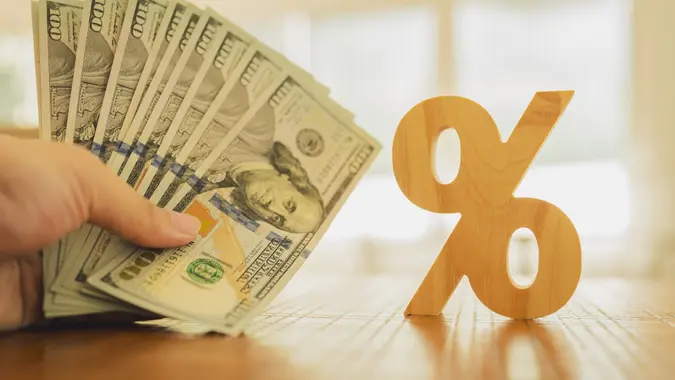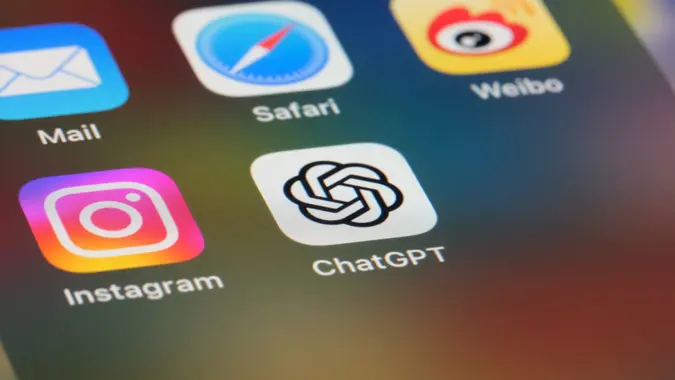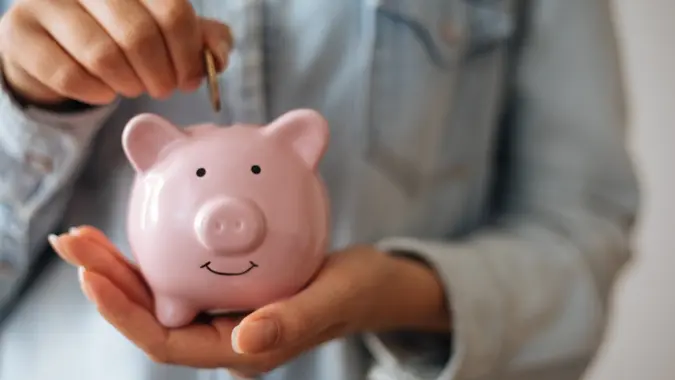The Ramsey Show: How To Save Big by Doing a ‘No-Spend Month’ in 2024

Commitment to Our Readers
GOBankingRates' editorial team is committed to bringing you unbiased reviews and information. We use data-driven methodologies to evaluate financial products and services - our reviews and ratings are not influenced by advertisers. You can read more about our editorial guidelines and our products and services review methodology.

20 Years
Helping You Live Richer

Reviewed
by Experts

Trusted by
Millions of Readers
New Year’s resolutions, particularly financial ones, often fall by the wayside a few months or even weeks after they are made. One of the reasons is that it’s hard to stick to a financial pattern that’s not a habit, especially if it involves cutting back on spending.
But the financial experts at the Ramsey Show suggest that a great way to start is to undertake a no-spend month. Not only can it start your year off right by saving you some money, it can start getting you in the habit of sticking to a budget and making smart financial moves. Here’s a look at how to set up a no-spend month in 2024, along with some of the ancillary benefits that could improve your long-term financial outlook.
Steps to a No-Spend Month
A “no-spend month” doesn’t mean you can’t spend any money at all. What it does mean is that you’ll have to avoid spending money on any nonessential items during that month. This includes everything from restaurant or takeout dining to vacations, movies, subscriptions, streaming services and any discretionary shopping.
You’re only allowed to spend money on essential items, like your housing costs, utilities, transportation, insurance, debt service and the food you cook at home. To accomplish this, you’ll have to make some changes to your budget.
How To Reallocate Your Budget
The first step in planning out your no-spend month is to look at every single line item of your budget. If you already have a budget in place, this step will be simple. If not, now is the time to draft one.
Highlight each item in your budget that’s considered “essential,” as listed above. Next, simply reallocate all of your other, discretionary budget items to savings. For example, if you normally spend $200 per month eating out, $250 per month on entertainment and $150 per month on miscellaneous shopping, reallocate all of that $600 to your savings.
There’s no doubt that this can take some getting used to. But the actual process is fairly easy and straightforward. You’ll just need the financial discipline and dedication to commit to the one-month no-spend challenge.
Additional Steps To Boost Your Savings
In addition to eliminating your discretionary spending during your no-spend month, see if you can manage to trim your non-discretionary expenses, as well. Kristina Ellis, one of the co-hosts of the Ramsey Show broadcast, said she can feed her family on just $100 per week at the grocery store. While you may or may not be able to trim your spending to that level, consider if there are ways you can reduce your grocery budget to less than you normally spend.
Similarly, see if you can save money in any other mandatory spending categories, such as gas, insurance or utilities. Use an app like GasBuddy to see where the cheapest gas is in your area, use an online comparison shopper to see if you can drop your insurance rates and adjust your thermostat to save a bit in all of these non-discretionary areas.
How To Make Budgeting a Habit
The Ramsey Show hosts suggest that it will take three months to develop new financial habits. This means that a no-spend month is just a step in the right direction. Once you prove to yourself that you can rework your budget and cut out unnecessary spending, you can permanently modify your financial habits going forward.
While living a “no-spend life” is impractical — and not very joyful — once you understand how to rein in your budget, you can take back some of your discretionary spending in a responsible fashion. This way, you can make successful budgeting a habit and strike a nice balance between enjoying your life and saving for your future.
How Lowering Expenses Can Boost Your Long-Term Finances
In the example above, you managed to save $600 in discretionary spending during your no-spend month. After toying with your budget, imagine you figure out that you can save $200 every month on a permanent basis.
If you invest that money at an 8% annual return instead of spending it, after 30 years, you’ll have boosted your nest egg by over $300,000. And that’s not even factoring in any additional money you funnel into your account as your paycheck increases or as you make further cuts to your budget.
The bottom line is that if you can learn how to shave even just a few hundred dollars from your budget thanks to your no-spend challenge, you can greatly improve your financial position over the long run.
 Written by
Written by  Edited by
Edited by 

























